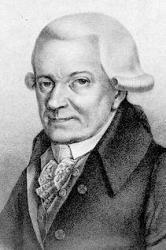Planning worship?
Check out our sister site, ZeteoSearch.org,
for 20+ additional resources related to your search.
- |
User Links
Search Results
Dios santísimo que en gloria
Author: Germán Díaz Pérez Meter: 8.7.8.7.8.7 Appears in 2 hymnals Topics: Discipulado Scripture: 2 Corinthians 5:18 Used With Tune: DULCE CARMEN
Dios santísimo que en gloria
DULCE CARMEN
Meter: 8.7.8.7.8.7 Appears in 258 hymnals Composer and/or Arranger: J. M. Haydn Tune Key: G Major or modal Incipit: 12345 43211 14321 Used With Text: Dios santísimo que en gloria
DULCE CARMEN
Dios santísimo que en gloria
Author: Germán Díaz Pérez Hymnal: El Himnario Presbiteriano #326 (1999) Meter: 8.7.8.7.8.7 Topics: Discipulado Scripture: 2 Corinthians 5:18 Languages: Spanish Tune Title: DULCE CARMEN
Dios santísimo que en gloria
Dios santísimo que en gloria
Author: Germán Díaz Pérez Hymnal: El Himnario #326 (1998) Meter: 8.7.8.7.8.7 Topics: Discipulado/Servicio; Discipulado; Discipleship Scripture: 2 Corinthians 5:18 Languages: Spanish Tune Title: DULCE CARMEN
Dios santísimo que en gloria
Michael Haydn

1737 - 1806 Person Name: J. M. Haydn Composer of "DULCE CARMEN" in El Himnario Presbiteriano Johann Michael Haydn Austria 1737-1806. Born at Rohrau, Austria, the son of a wheelwright and town mayor (a very religious man who also played the harp and was a great influence on his sons' religious thinking), and the younger brother of Franz Joseph Haydn, he became a choirboy in his youth at the Cathedral of St. Stephen in Vienna, as did his brother, Joseph, an exceptional singer. For that reason boys both were taken into the church choir. Michael was a brighter student than Joseph, but was expelled from music school when his voice broke at age 17. The brothers remained close all their lives, and Joseph regarded Michael's religious works superior to his own. Michael played harpsichord, violin, and organ, earning a precarious living as a freelance musician in his early years. In 1757 he became kapellmeister to Archbishop, Sigismund of Grosswardein, in Hungary, and in 1762 concertmaster to Archbishop, Hieronymous of Salzburg, where he remained the rest of his life (over 40 years), also assuming the duties of organist at the Church of St. Peter in Salzburg, presided over by the Benedictines. He also taught violin at the court. He married the court singer, Maria Magdalena Lipp in 1768, daughter of the cathedral choir-master, who was a very pious women, and had such an affect on her husband, trending his inertia and slothfulness into wonderful activity. They had one daughter, Aloysia Josepha, in 1770, but she died within a year. He succeeded Wolfgang Amadeus Mozart, an intimate friend, as cathedral organist in 1781. He also taught music to Carl Maria von Weber. His musical reputation was not recognized fully until after World War II. He was a prolific composer of music, considered better than his well-known brother at composing religious works. He produced some 43 symphonies,12 concertos, 21 serenades, 6 quintets, 19 quartets, 10 trio sonatas, 4 due sonatas, 2 solo sonatas, 19 keyboard compositions, 3 ballets, 15 collections of minuets (English and German dances), 15 marches and miscellaneous secular music. He is best known for his religious works (well over 400 pieces), which include 47 antiphons, 5 cantatas, 65 canticles, 130 graduals, 16 hymns, 47 masses, 7 motets, 65 offertories, 7 oratorios, 19 Psalms settings, 2 requiems, and 42 other compositions. He also composed 253 secular vocals of various types. He did not like seeing his works in print, and kept most in manuscript form. He never compiled or cataloged his works, but others did it later, after his death. Lothar Perger catalogued his orchestral works in 1807 and Nikolaus Lang did a biographical sketch in 1808. In 1815 Anton Maria Klafsky cataloged his sacred music. More complete cataloging has been done in the 1980s and 1990s by Charles H Sherman and T Donley Thomas. Several of Michael Haydn's works influenced Mozart. Haydn died at Salzburg, Austria.
John Perry
Michael Haydn
Germán Díaz Pérez
Author of "Dios santísimo que en gloria" in El Himnario Presbiteriano
Germán Díaz Pérez


 My Starred Hymns
My Starred Hymns

